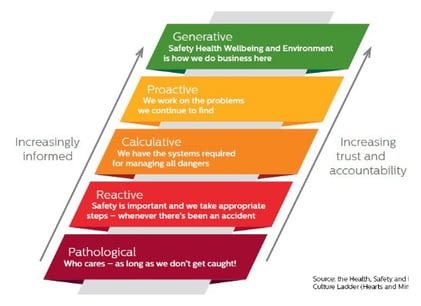Why (and when) do you need a digital Quality Management System?

Table of contents
"A quality management system contributes to the quality and safety of healthcare."
By automating processes, productivity increases. Tasks and responsibilities, like the follow-up of incidents, are clear, as such matters are laid down in the quality management system.
When the effectiveness and safety are improved, the organization's customer service also improves. Assessments of reported incidents and complaints make clear which parts of the customer service can be improved. Before purchasing quality management software it is advisable to assess the needs of the organization. A proper baseline measurement shows where the organization stands today, and what is required to improve the current situation.
This blog describes a number of pillars against which it can be measured to what extent quality and safety are sufficiently on the agenda..
1. Who is responsible for quality within the organization?
Attention to safety in care differs from institution to institution. In one organization it is the quality officer’s responsibility and in another it is everyone’s responsibility.
Safety is of course assured in daily work processes, and all healthcare professionals want to provide safe care, but the question is whether all are consciously pursuing it. When there is awareness throughout all layers of the organization, safety has already become more integrated.
2. What is the current safety culture?
 A healthcare institution’s current safety culture can be measured by the safety ladder. The safety ladder recognises five different types of safety cultures (see picture). The higher the safety awareness in an organization, the higher the score on the safety ladder.
A healthcare institution’s current safety culture can be measured by the safety ladder. The safety ladder recognises five different types of safety cultures (see picture). The higher the safety awareness in an organization, the higher the score on the safety ladder.
At the bottom of the safety ladder we find the pathological safety culture. Organizations that have a negative safety culture live in denial and don’t want to waste their time with safety. At the top of the ladder we find the generative culture, in which safety is an integral part of operations.
In addition, the way safety is managed may differ from one department to another within an organization. In the operating theatre, for example, there is likely to be more awareness of the importance of working safely than on a regular nursing ward or outpatient clinic.
With the help of a culture survey, you can measure the degree to which an open (or closed) culture prevails in an institution, department or team. Trends are used to determine the interventions that can be undertaken to improve the organizational culture step-by-step.
By having a quality management system in place, the safety culture of the organization will improve. This because the whole organization is responsible for filling the system with incidents, complaints, and other events. Thereby, the handling of these events is done by staff throughout all layers of the organization.
3. Does it contribute to operational objectives?
When it is agreed on an operational level to improve the quality of care, for example by reducing the number of serious incidents, a digital quality management system can support this.
Operational objectives can be monitored by the use of management dashboards and periodic reports. A digital quality management system supports the management of improvement projects. The system can monitor tasks and actions with regard to a specific incident or theme. Suggestions for improvements are assured and get the attention they deserve. Monitoring improvement actions can be the responsibility of the quality officer.
4. Is the organization able to structurally learn from incidents?
A digital quality management system generally includes an improvement tracking system that supports the management of improvement projects. Improvement projects may be initiated in response to a specific incident, a trend, or a specific issue. Many organizations have been reporting incidents for some time now. But still find it difficult to learn from these events.
The system monitors tasks, actions and lead times, to ensure that ideas for improvement are actually implemented. This safeguards the PDCA-cycle. It is difficult to achieve continuous improvement without a quality management system.
A digital quality management system can be set up in such a way that incidents can easily be shared anonymously (without the names of those involved). Dashboards with notifications clearly show where the risks lie. Sharing these internally and showing them on screens in the staff restaurant or in the coffee room increases awareness among employees.
By sharing incidents you give the message that incidents can be openly discussed. It facilitates discussion of incidents, thus creating a safe culture that focuses on learning from mistakes.
>> Learn about important elements of quality management on our special 'Quality Management' topic page.
How can the organization learn proactively?
If a care institution only responds to incidents that are reported, the organization is ‘stuck’ in the reactive behaviour step on the safety ladder. It is a good thing, of course, to initiate improvement actions to reduce the risk of recurrence. But when multiple incidents are reported within a certain process, it is recommended to take a proactive approach and analyse processes prospectively. Weak links are identified and addressed ahead of time.
If care institutions want to move up the safety ladder, they will have to proactively identify risks.
Safety becomes an integral part of business operations as soon as non-existent processes are already assessed for possible risks during the design stage, for example when opening a new department and initiating a new care process.
Digital Quality Management System, the internal business case
Is your organization about to transition from a paper-based to a digital workplace? Or does the organization already have a digital quality management system, but wants to replace it? In both cases it is advisable to develop a business case.
The business case describes the purpose of the project and provides insight into costs and benefits. A clear business case ensures involvement and improves the chances of successful implementation.
Do you want to know more about writing a business case for a digital quality management system? Download the eBook ‘Digital Quality Management System, the internal business case’.
Related articles
-
 Patient safety Incident management Reporting data Quality management
Patient safety Incident management Reporting data Quality managementThe importance of incident reporting in nursing
Work accidents and incidents happen in every industry, including nursing. This article shows how reporting can help increase patient safety.
Read more -
 Patient safety Reporting data Quality management
Patient safety Reporting data Quality managementHow to write an incident report
When should an incident report be completed and how should the report be written? In this article we’ll show you our best practices.
Read more -
 Communication TPSC News Organization
Communication TPSC News OrganizationServicedesk Engineer Mitch Dobbe | TPSC
Curious about the work of The Patient Safety Company's servicedesk? Read our interview with Servicedesk Engineer Mitch Dobbe!
Read more

